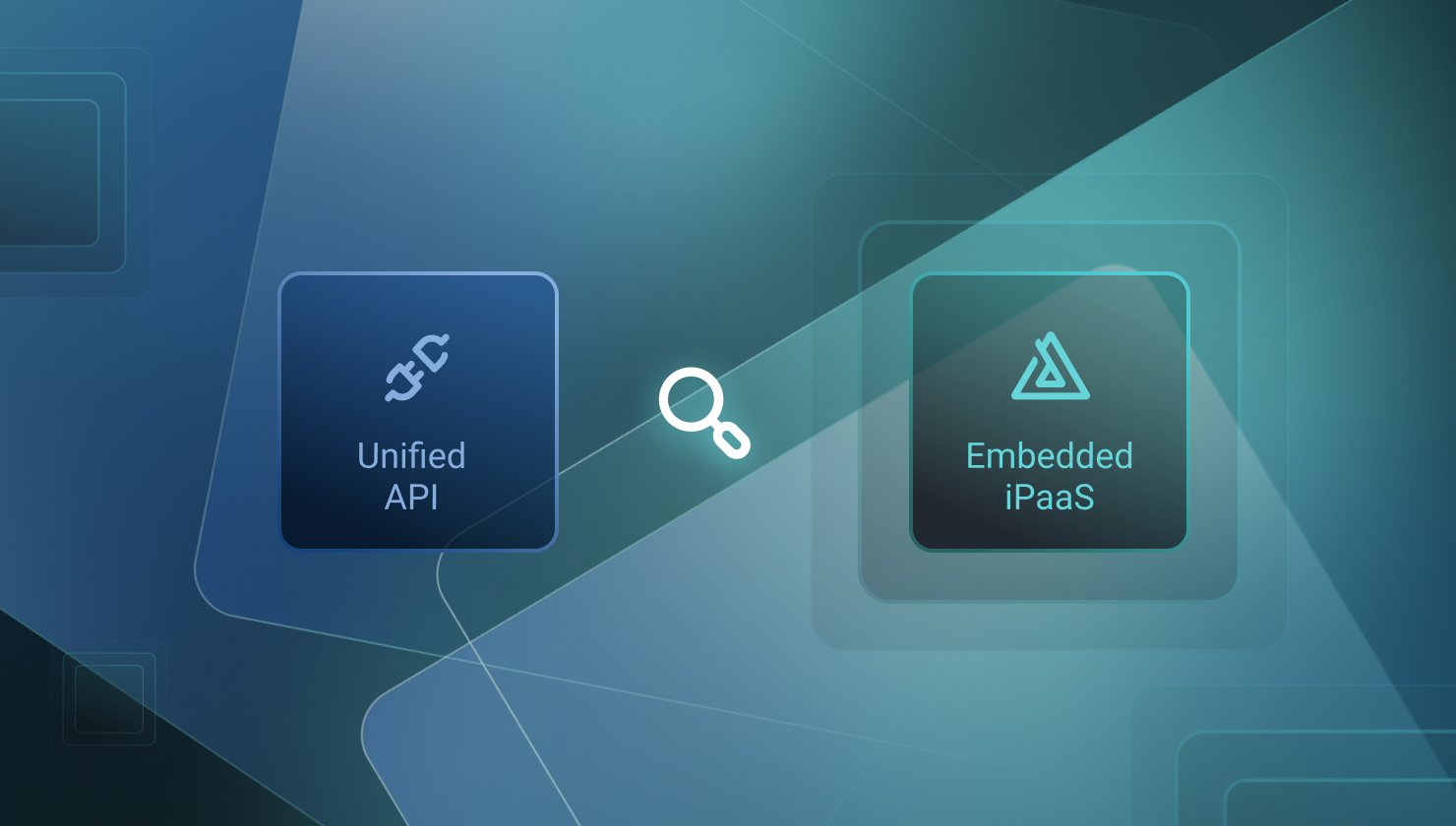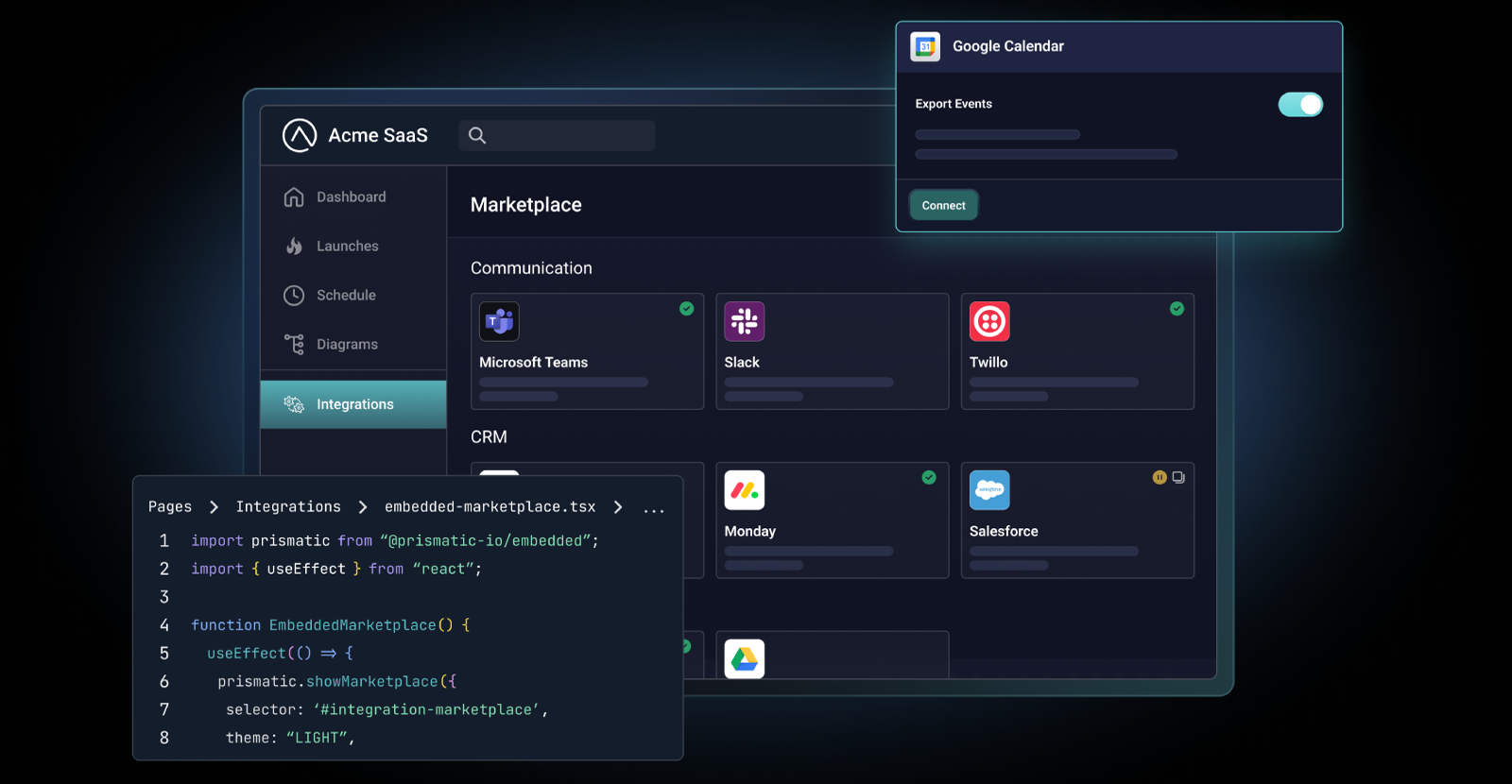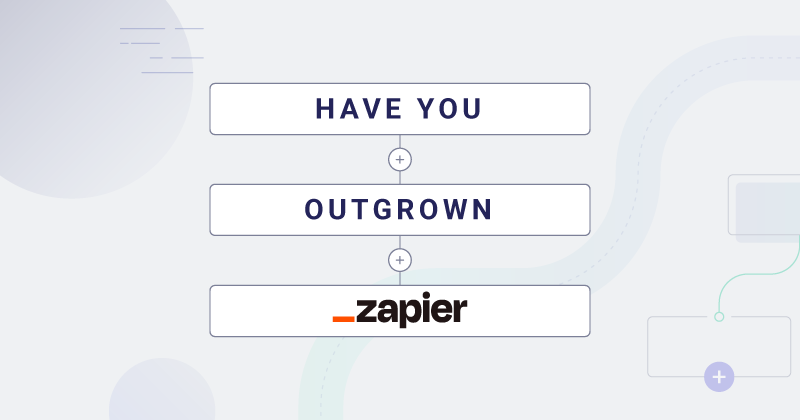An iPaaS (integration platform as a service) speeds up the process of building software integrations. The two types of iPaaS are enterprise iPaaS (sometimes called traditional iPaaS) and embedded iPaaS, but they are designed to solve fundamentally different issues.
Before we get into the details, let's look at two integration use cases.
- You have hundreds of customers in the service industry who use your SaaS app (an appointment manager) to drive their schedules. Each customer has its own billing and payroll systems. Your customers need your app needs to exchange data with those accounting systems.
- Your company intranet needs to display a combined calendar showing employee vacation/leave schedules for three different company offices. Each of those offices uses a separate calendar app.
We'll see which integration platform (embedded iPaaS or enterprise iPaaS) would be best for each of these, but let's first see why integration platforms have become so important.
Integration platforms are vital to increasing efficiency
Businesses are using more SaaS apps than ever. Blissfully, now Vendr, noted in a 2020 report that small businesses use an average of 102 apps, mid-market businesses use an average of 137 apps, and enterprises use an average of 288. That's a lot of different applications.
A recent study in the Harvard Business Review notes that:
Why do businesses need iPaaS?
We could reduce the number of apps users need to switch between if the apps could share data. But building all those integrations from scratch requires a time investment that is off-putting to many companies.
That's where an iPaaS or an embedded iPaaS come into play. Both platforms can significantly increase the efficiency of the integration-building process.
As more companies address their needs for internal integrations, the iPaaS market continues its rapid expansion. In its 2025 Magic Quadrant for Enterprise Integration Platform as a Service, Worldwide, Gartner estimates that iPaaS will be more than $17 billion in 2023, speaking to an expected 19% CAGR.
What about embedded iPaaS?
Since embedded iPaaS is a relatively new category, analysts, such as Gartner, are still grouping embedded iPaaS products – and their revenue – under the iPaaS category.
Clearly, though, embedded iPaaS is a considerable part of the broader category's growth. We have seen the number of embedded iPaaS vendors increase from a handful ten years ago to dozens today. G2 currently lists 44 of them.
At the same time, enterprise iPaaS vendors such as Tray and Workato (seeing the shift in the market) extended their products into the embedded iPaaS space. We'll look into what those vendors have done later, but first, let's review enterprise iPaaS.
What is enterprise iPaaS?
An enterprise iPaaS is a solution that enables the development, deployment, and support of integrations inside your company. This platform connects apps via integrations between internal business systems.
What is embedded iPaaS?
An embedded iPaaS, or embedded integation platform, is a set of tools that enables a SaaS company to quickly build reusable, configurable integrations to any app in any software category and deliver them to its customers as a seamless part of its product.
Which platform is best for your integrations?
It comes down to whether you are building internal integrations (for your company) or external integrations (for your customers).
If you are solving for internal integrations, and sharing data between systems within your company, then an iPaaS is the right tool.
An enterprise iPaaS is ideal for the use case we mentioned, where you must combine several calendars for your company into one calendar that shows on your company intranet. You would be integrating data from several apps but doing so within your enterprise and for the benefit of your employees.
But if you need to address the integration question for your customers, sharing data from your SaaS product with the other apps your customers use, you should use an embedded iPaaS. Some SaaS companies have attempted to handle this scenario with Zapier but quickly run into limitations when they try to scale.
An embedded iPaaS is perfect for the use case we mentioned with your appointment scheduling app and multiple service industry customers. You would build these integrations to connect apps for your customers' benefit.
What about an enterprise iPaaS that has pivoted to embedded iPaaS?
As noted, the embedded iPaaS category didn't even exist until several years ago. When the category was first defined, existing enterprise iPaaS vendors wanted to take advantage of the new embedded iPaaS market. Tray and Workato (both with solutions designed to help users connect their apps for internal use) used those existing enterprise iPaaS solutions as the starting point for embedded iPaaS products.
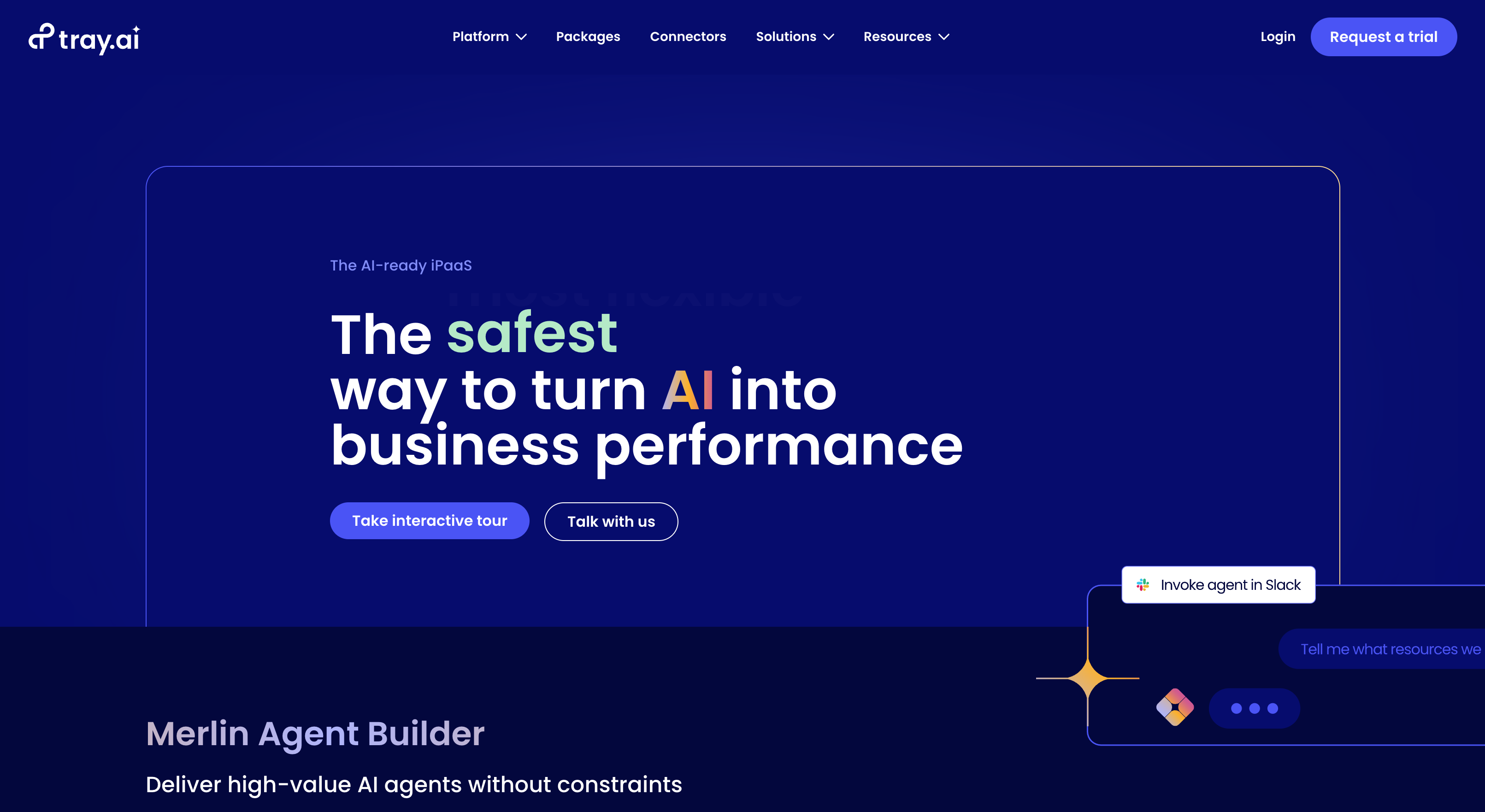
It is clear that they continue to focus primarily on the enterprise iPaaS market, and increasingly on how they can leverage AI for that market. As a result, while these vendors have embedded iPaaS products, those products are not purpose-built for the embedded iPaaS market but are enterprise iPaaS solutions that have been modified to have some of the features of proper embedded iPaaS solutions.
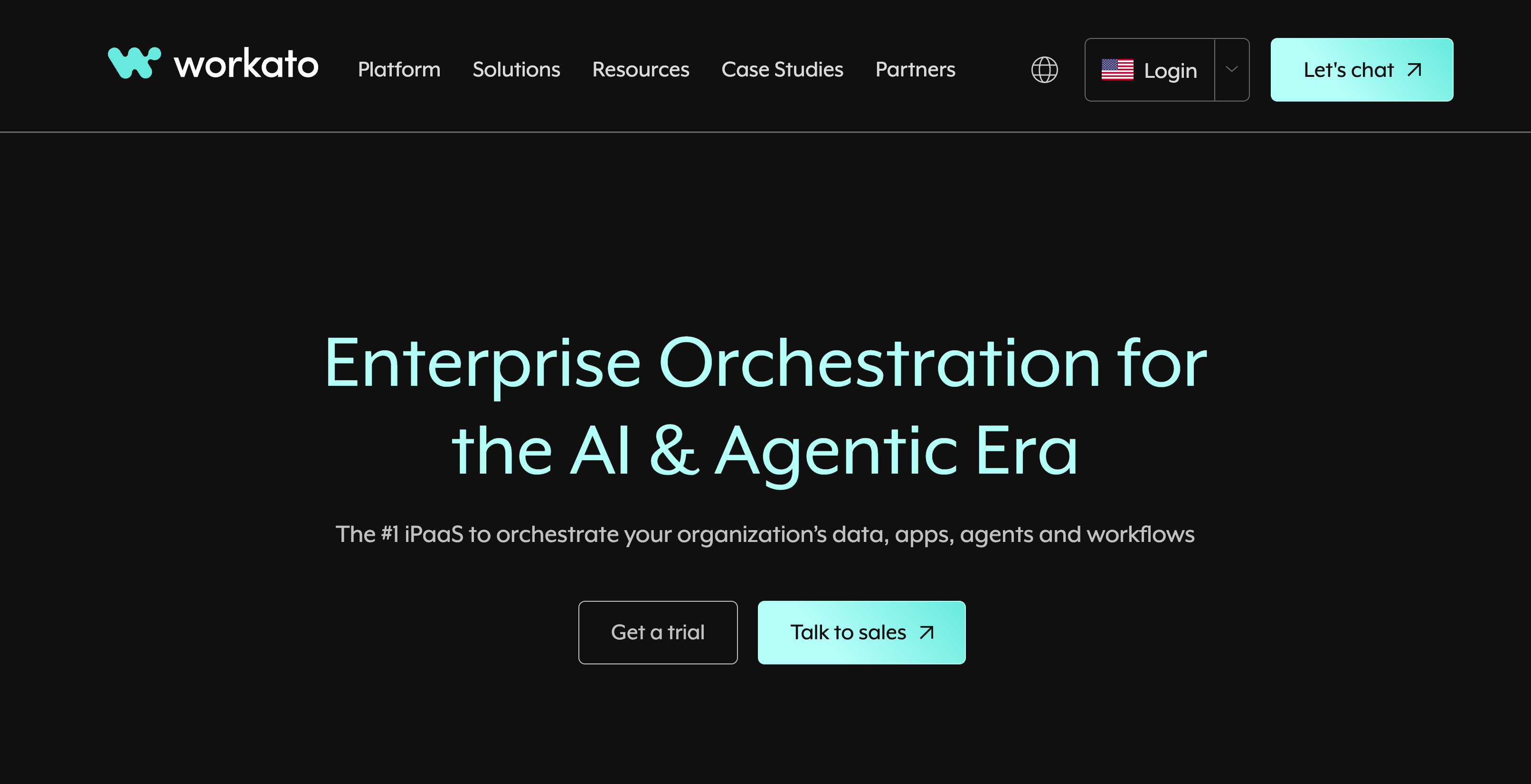
While each of these solutions is different, they share common weaknesses for dev UX, end-user UX, and customer support, among other things. Check out our Tray and Workato pages to see how those solutions compare to an embedded iPaaS built specifically for B2B SaaS.
Why you should consider an embedded iPaaS for your SaaS app
A traditional iPaaS does an excellent job of integrating systems within the enterprise, but it's not the right tool for B2B SaaS integrations.
An embedded iPaaS is the only integration platform purpose-built for creating and managing customer integrations at scale.
Some companies have tried building, deploying, and managing customer integrations with an enterprise iPaaS, but that platform lacks the concept of customers. As a result, an iPaaS doesn't provide a way to efficiently build and deploy integrations for multiple customers (including customer-specific data management).
Low-code imposes needless limitations on B2B integrations
An enterprise iPaaS also tends to be a low-code/no-code environment. This works great to create workflow automation between internal apps but quickly reaches limitations with B2B SaaS apps. B2B SaaS companies often need to develop complex integrations that connect niche systems, and low-code/no-code just isn't built for that.
An embedded iPaaS includes low-code functionality and full development capabilities (including its API and code versioning in your existing dev ecosystem). This flexibility allows for low-code where it makes sense but doesn't box you in when you need the flexibility that a code-native approach brings.
Reusability is critical for scaling B2B integrations
Finally, an enterprise iPaaS does not include tools for building reusable integrations and managing unique credentials and configurations for each customer.
An embedded iPaaS, on the other hand, is specifically designed for building and deploying integrations for your customers, including everything your teams need to manage and support each integration for each customer. An embedded iPaaS includes an integration marketplace where customers can view, select, and enable available integrations. They can also manage their integration configurations and perform first-level troubleshooting when there are problems.
For a comparison of embedded iPaaS tools, check out our post on the best embedded iPaaS.
Integration platforms help you do more with less
With businesses using more SaaS apps than ever before, data-sharing between those apps is essential for good business processes. Creating first class integrations takes work, but integration platforms can significantly improve the efficiency of your integration-building process.
Be sure you are using the right platform for the job. An enterprise iPaaS is excellent for internal workflow automation within your enterprise. However, an embedded iPaaS provides the additional functionality necessary to build, deploy, and support integrations between your SaaS app and other apps in your customers' business ecosystems.
If an embedded iPaaS would support your use case, schedule a demo and we'll show you how Prismatic can supercharge your B2B SaaS integrations.


